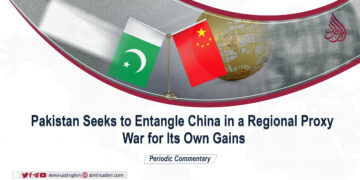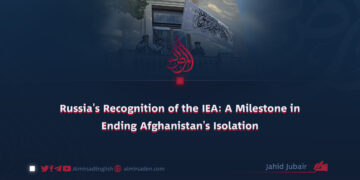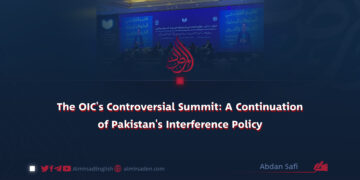Author: Junaid Zahid
If one desires a comprehensive understanding of the historical process and militant trajectory of this group, it becomes evident that its evolution commenced following the establishment of a democratic system in Iraq and the subsequent rise of a specific faction to power in the region.
The movement that surfaced under the identity and emblem of ISIS—”The Islamic State of Iraq and Syria”—engaged in armed conflict with a predetermined agenda for its establishment and operations. From its inception, this group set forth a course focused on overthrowing existing powers, espousing the belief that its ideology should prevail, with all other movements either aligning with it or being absorbed by it.
Under the banner of ISIS, a ruthless and armed faction emerged, operating with a mindset and tactics deeply rooted in terror. By temporarily disrupting the newly established regional order—particularly in the Middle East—it sought to instill fear and tyranny, provoking global alarm while attempting to cloak its malevolent ideology in the guise of a sacred and divine religion.
Despite professing the implementation of Sharia as its ultimate objective in its manifesto, in reality, it tarnished the image of Islamic law by resorting to highly perilous and extreme methods.
In truth, ISIS stands out as one of the most brutal and savage embodiments of terror to have surfaced in contemporary times. To grasp the factors contributing to its rise, we must first examine the environment from which it emerged. Only then can we elucidate the underlying reasons for its formation.
ISIS represents a tapestry woven from threads of oppression and destruction. It has not only destabilized Arab nations but has also imperiled the broader region.
The Origins and Motivations Behind this Group
To comprehend the genesis and motivations of ISIS, we must acknowledge that the absence of shared regional initiatives and collaboration among neighboring nations created a fertile ground for extremist groups like ISIS to gain traction and vitality.
The lack of a cohesive and defined agenda caused many groups worldwide to feel neglected and adrift, prompting them to position themselves as “saviors” amidst such chaos.
Another pivotal factor fueling the rise of this lethal movement is greed—specifically, the pursuit of wealth and power through corruption and personal gain. This dynamic not only facilitated the emergence of ISIS but also sustained various destructive groups across the region.
The Wars in Iraq and Syria and the Role of the United States
Conflicts often erupt among powers when one perceives the other as weakening or becoming irrelevant. The United States—a major actor in the recent geopolitical shifts across the Middle East and Asia—played a significant role in the genesis of ISIS.
By fomenting internal strife in Iraq and later in Syria, the U.S. viewed such turmoil as an opportunity to advance its strategic objectives. To achieve this end, it relied on proxy groups that would comply with its interests, particularly in neutralizing any resistance from its allies.
The U.S. devised a specific strategy and entrusted the operation of ISIS to its intelligence agencies in the region. Initially, the U.S. objective, especially in Iraq and Syria, was to eliminate other jihadist movements that could hinder its future plans and agendas.
Given that U.S. long-term strategies often entail subterfuge and manipulation, the ISIS project—aimed at eradicating or at least discrediting jihadist movements—became a top priority in its broader regional framework.
The countries deemed most conducive to seeding and expanding this project were Iraq and Syria.


















































